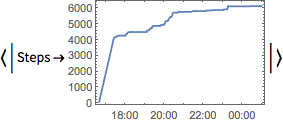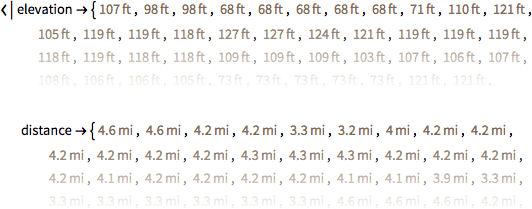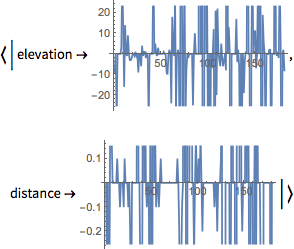Data Processing
Smooth data by taking a moving average:
| In[1]:= |
| Out[1]= |

|
| In[2]:= |
| Out[2]= |

|
Accumulate values to get running totals:
| In[1]:= |
| Out[1]= |

|
| In[2]:= |
| Out[2]= |

|
Find averages for blocks of values:
| In[1]:= |
| Out[1]= |

|
Rescale every value in each time series:
| In[1]:= |
| Out[1]= |

|
Rescale Normalize Standardize Threshold Clip
Apply a function to values in a particular time series:
| In[2]:= |
| Out[2]= |

|
Get pure lists of values, without timestamps:
| In[1]:= |
| Out[1]= |

|
| In[2]:= |
| Out[2]= |

|
Differences LowpassFilter MaxFilter Fourier PowerSpectralDensity
QUICK REFERENCE: Linear and Nonlinear Filters »















